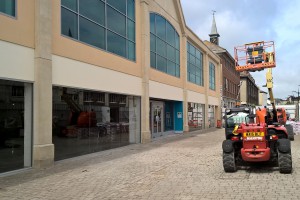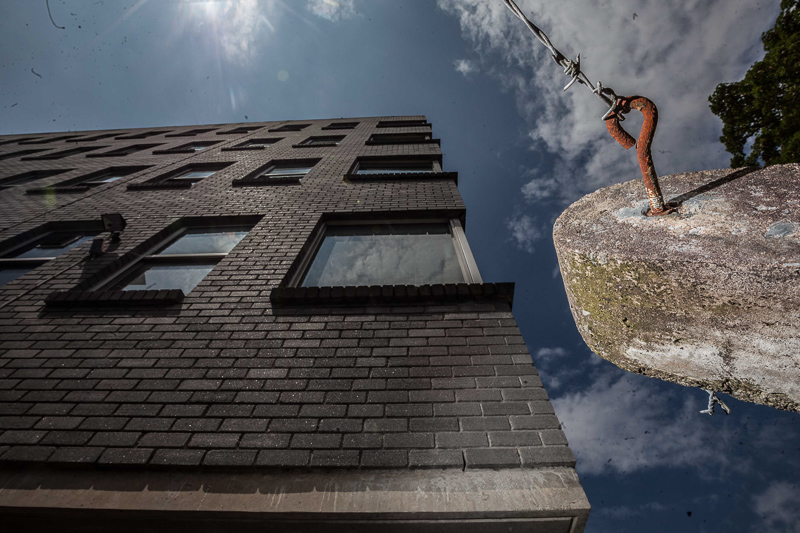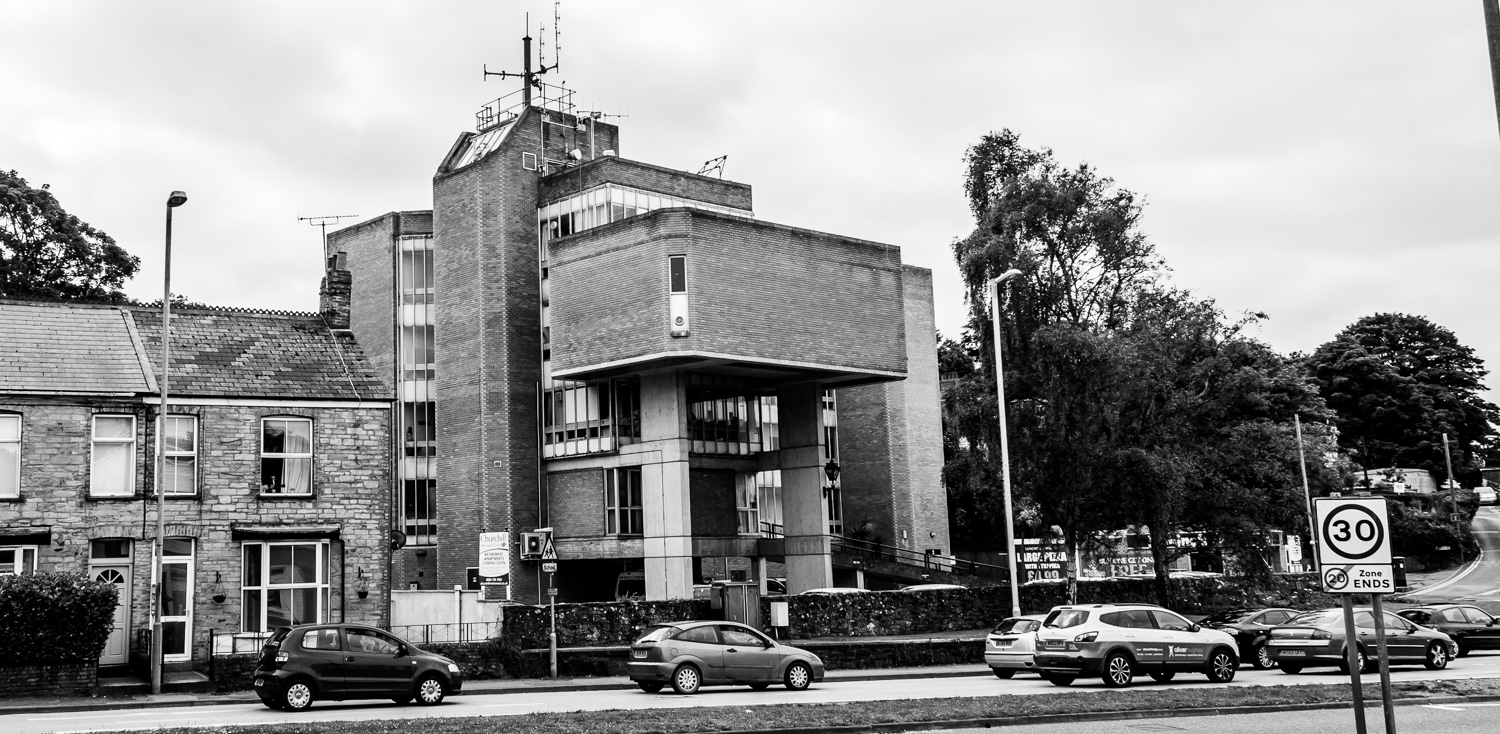The Changing Face of Retailing in Truro
My first real experience in the retail trade was as a ‘Saturday boy’ in Debenhams of Northampton in 1977. I worked on the menswear department selling jeans – there were two sometimes three of us looking after one free-standing rail, about twelve feet of wall space holding nothing but different brands and styles of jeans and a single dressing room. Today you can buy jeans for under a tenner – less than the price I was selling them for almost forty years ago. Today you can go into large retail stores in Truro and find less staff in the store than were manning that small jeans department.
What does this mean, what are the implications for retailers, how on earth can they make a profit these days? Aside from the obvious implications for the people who make the jeans and the costs and impacts of transporting them, the profit margin per item is tiny, meaning that they have to sell more units and squeeze every penny of their costs.
This doesn’t just apply to jeans of course but to all areas of retailing and, for me, the ‘demand’ for lower prices has been the single biggest change for retailers not just in Truro but everywhere – far greater than the ‘threat of online shopping’.
Truro has always been at the centre for retail in Cornwall – from its days as a stannary town, through to the days of independent department stores with the likes of Roberts and Malletts et al and to the current days which sees a strong mix of both independent and multiple chain stores.
Truro is an urban centre serving a largely rural community. It still retains a largely independent business mix (over 60% last time I counted) and has a unique mix of independents and national brands, often located next to each other. This is vitally important for the character, identity and personality of the city. Its compact nature means that the entire retail offer is accessible to visitors. Truro’s retail dominance in Cornwall comes, in part, from its history but also from its connectivity – the city is located in the heart of Cornwall, you can get here easily by road, rail, bus and bike or on foot. We have over 3,000 car parking spaces connecting all parts of the city centre to the road structures and we also have two park and ride services.
We have low retail vacancy rates in Truro but also a high turnover of shops – this demonstrates both a high demand for retail space in the city but also a high level of failed businesses, which goes back to my jeans story – the streets of Truro are not paved with gold; the rents, rates and transport costs are high and there is plenty of competition. Truro is circled by any number of retail-led out-of-town development schemes which rattles the investment market – why open a new shop in the city centre with its costs, access and often restrictions on available space and complex buildings when you can open in an off-the-shelf unit on an ‘any-town’ retail development on one of the main approach roads? I’ll tell you why – because for me there is a magic formula for retail. It’s not easy but it means that you must get all aspects of product, service and environment right. Layer on top your communications strategy – this is where online comes in by offering superb ways of communicating with your customers – and you are set to achieve the differentiator, the essence that sets Truro apart from other towns or the soulless transactional worlds of Amazon or e-bay – it is the retail experience you can enjoy in Truro.
Last week saw the opening of a Waitrose supermarket on the outskirts of Truro. As far as supermarkets go, it’s a good one. But for every penny spent there, it’s a penny lost from elsewhere – nobody is eating more food as a result of their opening, and it’s in the wrong place too. Back to the Truro experience though – we have a thriving Co-op in the heart of Truro. We have great fresh produce available from the likes of the Cornish Food Box, Thornes, Archie Browns and the Pannier and Farmers Market – all delivered with a smile, a bit of banter and a known face. One of the real risks posed by supermarkets though is in their non-food offer – just look at how heavily Waitrose are promoting their John Lewis ‘click and collect’ service as part of their opening marketing campaign. This is a real threat and one that many of Truro’s businesses are already wise to as they integrate their online with their more traditional off-line business (have a look at The Uneeka website for a great example).
 With Primark due to open in Truro this autumn, what will that do for the city’s retail offer? In the first instance, I can think of no other brand that will attract more new customers into Truro than Primark. But the impact that this store will have on existing retailers, on the transport and parking infrastructures of Truro remains to be seen. Also, the sales volumes needed to generate sufficient revenues (back to the jeans again) will see a fleet of delivery vehicles servicing the store.
With Primark due to open in Truro this autumn, what will that do for the city’s retail offer? In the first instance, I can think of no other brand that will attract more new customers into Truro than Primark. But the impact that this store will have on existing retailers, on the transport and parking infrastructures of Truro remains to be seen. Also, the sales volumes needed to generate sufficient revenues (back to the jeans again) will see a fleet of delivery vehicles servicing the store.
So to the future of retailing in Truro – what will it hold? No one really knows for sure but certainly the successful traders will be those that deliver excellence in the areas of product, service and environment and who fully embrace the online opportunities to communicate (not just to sell) with their customers. We may see further famous names following in the footsteps of Woolworths, BHS and Austin Reed and leaving holes in the high street but hopefully the holes that they leave will be seen as more attractive than out-of-town sites. I can foresee the growth in niche nationals building on Truro’s legacy of hosting such names as Apple, The White Company, L’occitane and Steamer Cookware and, in parallel, the growth in niche independents building on such names as Inhabit, Illustrated Living, Magpie & Fox and Uneeka. Then, in the hybrid area, I can see more ‘nationals acting like locals’ – Waterstones being the perfect current example – a national brand that acts like your local favourite bookshop.
Provided that collectively, Truro keeps itself clean, safe and welcoming and offers quality, choice and great value with the odd surprise then it’s retail future looks far stronger than most.
Neil Scott
So what is a BID?
A Business Improvement District (BID) is a simple legal framework that enables businesses in a defined area to collectively identify, manage and fund new initiatives and projects all aimed to improve the commercial area.
It really is a business-led, business funded (through a nominal levy calculated against the rateable values of eligible businesses) and business managed scheme that secures local funds and energies for local solutions. BIDs have been around since 2004 and there are now 230 such schemes operating across the UK with eight in Cornwall – Truro, Falmouth, Newquay, Camborne, St Austell, Newham Industrial Estate, St Ives and Penzance. Town centre BIDs have all focused on increasing footfall and generating additional consumer spend, something that has been particularly relevant to businesses in the recent economic climate.
The process of developing a BID involves extensive consultation with businesses to establish what improvements they want and for which they may be prepared to pay.
For a BID to go ahead, two conditions must be met; firstly, a majority of those voting have to vote ‘yes’ and secondly those ‘yes’ votes have to represent more than 50% of the total rateable value of all votes cast. If these conditions are fulfilled, payment of the levy becomes mandatory for all businesses in the defined area.
So, a BID will only be established if the majority of businesses, by number and rateable value, want it. BIDs are viewed by many businesses as a fair and affordable way of creating a ring fenced fund for up to 5 years that is ‘managed by business for business.’
The Truro BID was the first in Cornwall and was introduced in 2007. Over the past nine years the scheme has delivered a wide range of projects, including the funding of all aspects of the city’s Christmas lighting display and the supporting marketing activities making Truro one of the most successful Christmas destinations in the south west. The BID developed the city’s comprehensive website at Enjoy Truro which, amongst other things, provides a full page for every business in the defined BID area (at the time it was launched around 40% of businesses in Truro had no online presence whatsoever). The BID also funds most of the city centre summer planting which has been instrumental in securing a succession of gold awards at the Britain in Bloom competitions. The BID delivers Truro Trend – a celebration of the city’s fashion offer – that includes a catwalk-in-the-cathedral fashion show as part of its annual events programme. As importantly, the BID provides a voice for the local business community.









The West Briton reports that Neil Scott is retiring. This isa good place to say thanks to him for his contribution to the town over the past decade or so. He has led by conciliation, bringing people together who might not have thought of speaking to each other, to develop new ideas and ways of dealing with old problems. He has also encouraged creativity, young businesses and the town as a whole to see itself as a creative energiser and celebrator. His sanguine philosophy, as described in this article, is good advice – and his contribution to the life and commerce of the town will be missed – and he will always have many friends to visit here when he comes east from time to time!
B